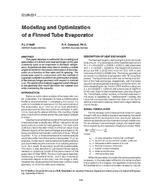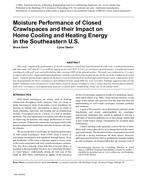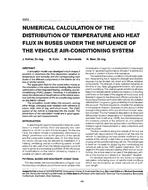In cold climates the augmented edge-glass heat transfer at the bottom of a glazing system creates a special problem. This is where condensed water and/or frost most readily occur. Two mechanisms determining the rate of edge-glass heat transfer, namely, edge-seal conduction and fill gas convection, are discussed. Current methods for estimating average edge-glass heat loss rates are reviewed. No reliable methods have been established for calculating the minimum temperature near the bottom of the indoor glazing. Heat transfer by natural convection of a gas in a vertical slot is a highly complex process about which there exists an abundance of technical information. The literature reviewed describes laminar flow regimes, mechanisms of heat transfer, local heat transfer, hydrodynamic stability, and conditions governing the onset of turbulence. These findings are discussed as they pertain to total and local heat transfer rates in glazing systems.
Citation: Symposium, ASHRAE Transactions, vol. 95, pt. 1, Chicago 1989
Product Details
- Published:
- 1989
- Number of Pages:
- 12
- File Size:
- 1 file , 1.6 MB
- Product Code(s):
- D-24569


